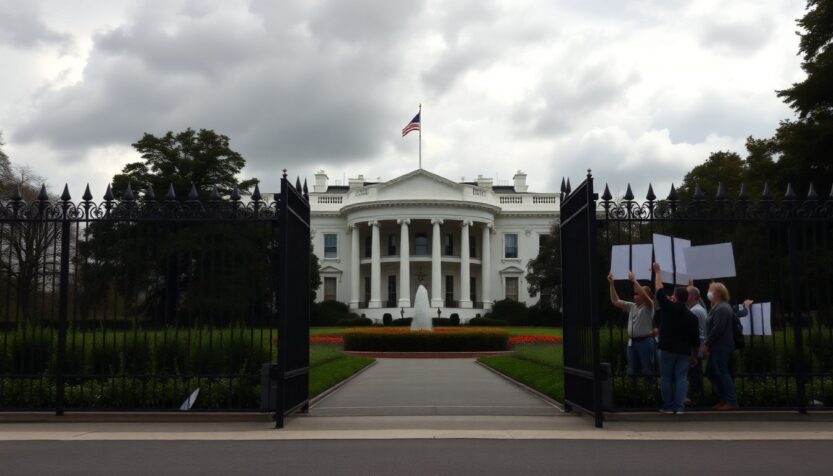The recent government shutdown has not only disrupted federal services but has also become a pivotal moment for President Donald Trump to assert his influence over political narratives. As the clock ticks on the shutdown, the White House website has transformed into a platform for Trump’s administration to cast blame on Democrats while showcasing select historical events in a way that aligns with their political agenda.
With approximately 1.4 million federal employees affected, the implications of this shutdown are profound. Many of these workers, roughly half, are categorized as essential and continue their duties without pay. The other half face furloughs, creating a tense atmosphere in Washington. The executive branch is keen to communicate its perspective, strategically utilizing the online platform to steer public sentiment.
Trump’s digital strategy during the shutdown
Upon visiting WhiteHouse.gov, users are greeted with a striking banner proclaiming, “Democrats Have Shut Down the Government.” A countdown timer ticks away, highlighting the duration of the shutdown. This approach is not merely informative; it serves as a tactical move to frame the narrative in favor of the Trump administration.
Historical context and selective storytelling
In an unexpected twist, the White House website has been updated to include a timeline of significant events in its history, now peppered with recent controversies. For instance, the timeline mentions the infamous affair between President Bill Clinton and Monica Lewinsky, which led to impeachment proceedings, alongside Trump’s plans for a lavish ballroom in the East Wing. This selective recounting of history seems designed to provoke and engage visitors, particularly those aligned with the opposition party.
Additionally, the website features a photo of Hunter Biden, son of President Joe Biden, raising questions about his alleged connections to a cocaine discovery in the White House. Such content appears to serve a dual purpose: to distract from the shutdown’s impacts and to maintain a heated political discourse.
The broader implications of the shutdown
The current government shutdown is now the second-longest in U.S. history, and its effects are felt far beyond the immediate loss of services. The political fallout from this impasse may redefine future funding negotiations and the nature of governmental operations. Trump’s administration has utilized this shutdown not only as a punitive measure against Democrats but also to reassert presidential power.
Historical precedents and shifts in power dynamics
Historically, the concept of a government shutdown stems from legal interpretations aimed at ensuring compliance with federal spending laws. This practice began in the 1980s, yet its current application under Trump’s leadership is markedly different. Where previous administrations applied shutdown rules uniformly, Trump’s approach has introduced an unprecedented level of political strategy into the mix.
For instance, during a recent luncheon with GOP senators, Trump casually referred to his budget director as “Darth Vader,” boasting about cutting Democratic priorities. Such rhetoric suggests a willingness to leverage the shutdown as a means to solidify his base and further his agenda, even at the expense of federal employees and essential services.
As the standoff continues, Democrats have remained steadfast in their position, arguing that the public will ultimately hold Republicans accountable for the hardships inflicted by the shutdown. Their resolve is especially pronounced among lawmakers whose constituents are heavily reliant on federal employment and services. The question remains whether negotiations will resume soon, or if this shutdown will serve as a blueprint for future political maneuvering.

